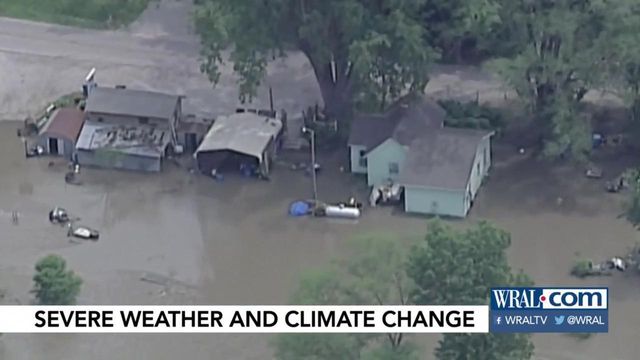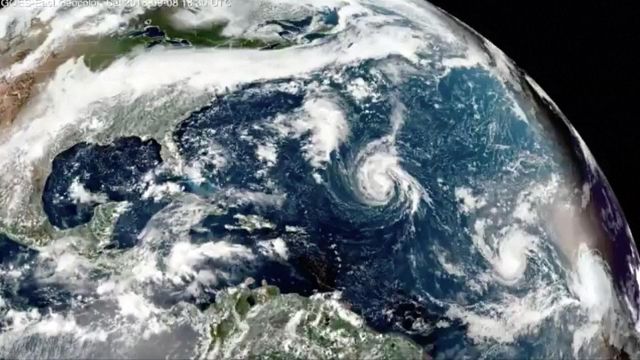Does the recent severe weather relate to climate change?
How does the recent severe weather relate to climate change?
Posted — UpdatedCan our weather be a sign of a changing climate? Or is it just weather, unpredictable and constantly shifting?
The answer is tricky and depends on how you look at it.
Let's start with the temperatures in North Carolina. If you felt like May was hot, perhaps hotter than normal, you were correct. We had eight days above 90 degrees in May, which is more than the last four Mays combined. But by itself, this doesn't tell us too much, according to WRAL meteorologist Elizabeth Gardner.
"I think it's probably a pattern," she said. "It doesn't necessarily mean we are going to see this next year or the year after that or the year after that, but if you start to look at it as a 10-year pattern or a 20-year pattern you can definitely see a trend of all of this climbing."
Scientists say it's best to look at climate change through that long-term lens when trying to determine what it all means. Take the recent tornado outbreak. The National Weather service counted 434 tornados in the final two weeks of May, but Dr. Walter Robinson of the North Carolina Climate Office, said he is not ready to blame climate change.
"Scientists have to be conservative and skeptical," Robinson said. "If we start getting outbreaks that size a few springs in a row, then you are going to say OK (this is worth watching)."
One thing scientists do feel confident in attributing to climate change is the strength of recent storms. A warming Earth has led to more water vapor in the air and water vapor is fuel for severe weather.
"Heavier rain when we have rain, stronger thunderstorms," Gardner said.
"It doesn't mean every storm is going to be bigger," Robinson said. "It doesn't mean every rainstorm is going to be heavier. But it means the biggest storms can be bigger and the heaviest storms can be heavier."
This has been particularly evident with the hurricanes of the last few years. Hurricane Florence was the wettest tropical cyclone on record in the Carolinas, according to the National Weather Service. It produced 20 to 30 inches of rain, and record-breaking storm surge of nine to 13 feet.
Since 1950, the average number of named storms per year is 11.
• Credits
Copyright 2024 by Capitol Broadcasting Company. All rights reserved. This material may not be published, broadcast, rewritten or redistributed.






